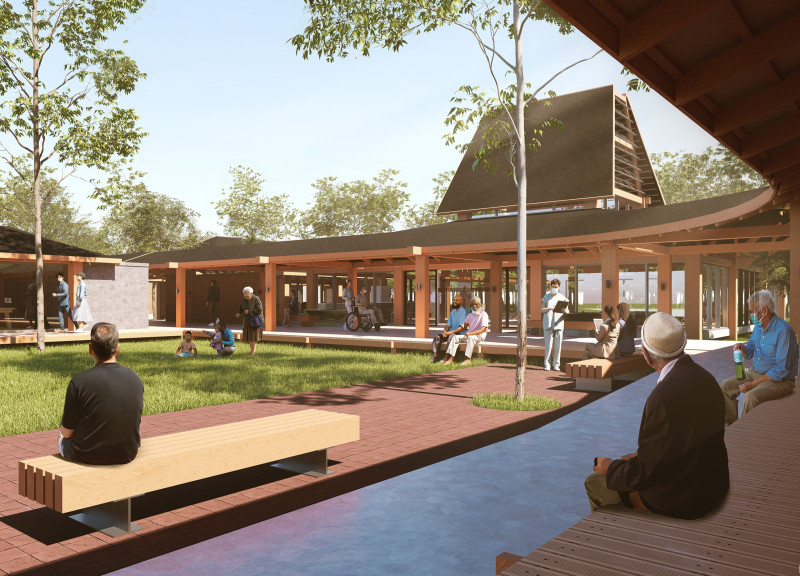5 key facts about this project
The architectural design is characterized by its careful spatial organization that invites users to explore and interact within the environment. Open and flexible layouts allow for a variety of uses, whether for social gatherings, communal events, or individual activities. This adaptability is a critical aspect of contemporary architecture, as it responds to the changing needs of communities without compromising on aesthetic value.
One of the notable features of the project is its commitment to sustainable practices. The architects have utilized a materials palette that includes concrete and steel for structural integrity, complemented by glass to foster transparency and connectivity. The use of timber adds warmth and a tactile quality to interior spaces, creating an inviting atmosphere. Local stone is incorporated into the facade, grounding the building in its physical context and reinforcing ties to the surrounding landscape. This conscious selection of materials not only enhances the visual appeal but also aligns with efficient and responsible construction methods.
An important aspect of the architecture is its seamless relationship with the outdoors. The design thoughtfully incorporates landscaping elements that extend the usable space beyond the building’s boundaries. Terraces and green roofs play a significant role in promoting biodiversity and improving air quality, while also offering users a direct connection to nature. These outdoor areas provide much-needed recreational opportunities and are a testament to the project’s focus on community well-being.
The design also embraces innovative approaches to environmental sustainability. The incorporation of renewable energy solutions, such as solar panels and rainwater harvesting systems, showcases a dedication to minimizing the ecological footprint. These technologies not only enhance energy efficiency but also serve as educational tools for users, promoting awareness about sustainability practices.
Unique design approaches are evident in the architectural details as well. The careful consideration of light and shadow gives depth to the facades, while strategically placed windows and openings ensure that natural light floods the interior spaces. This attention to lighting creates a dynamic atmosphere throughout the day, reflecting the natural changes in the environment. Care has also been taken to ensure that the design respects the local culture and history, using materials and forms that echo the traditional aesthetics of the region while presenting a modern interpretation.
The project successfully represents a vision for contemporary architecture that prioritizes community, sustainability, and practicality. It stands as a model for future developments, illustrating how designs can foster connections between people and their environment while addressing the pressing challenges of our times.
For a deeper understanding of the architectural concepts and implementations, readers are encouraged to explore the architectural plans, architectural sections, and architectural designs that further illustrate the innovative ideas woven throughout this project. By delving into these elements, one can gain insights into the careful planning and thought processes that underpin the architectural decisions made within this remarkable project.


 Farrel Adyuta Wiratama Kuspriyadi
Farrel Adyuta Wiratama Kuspriyadi 




















